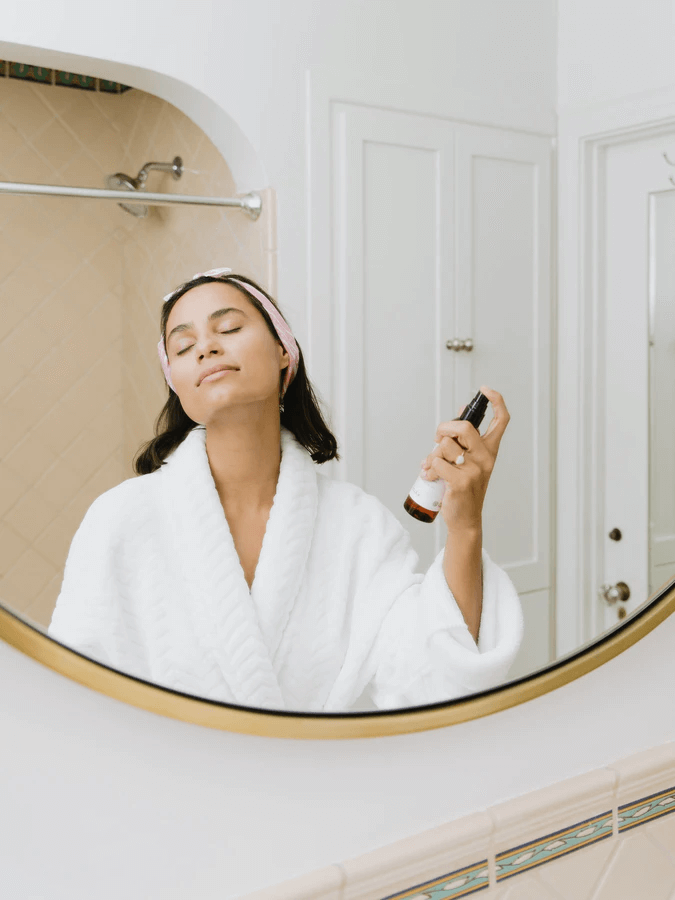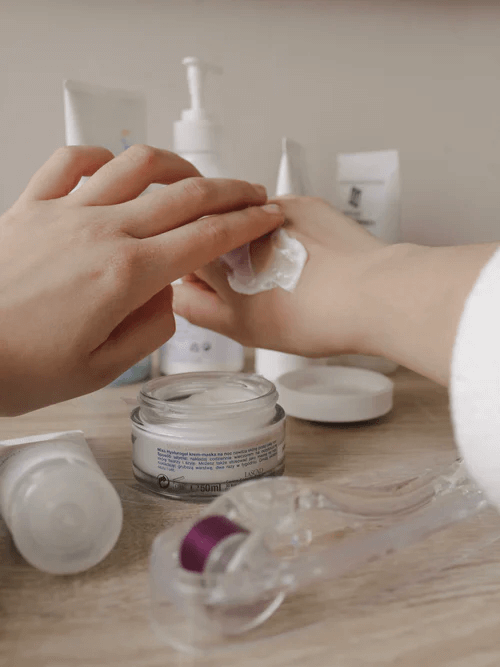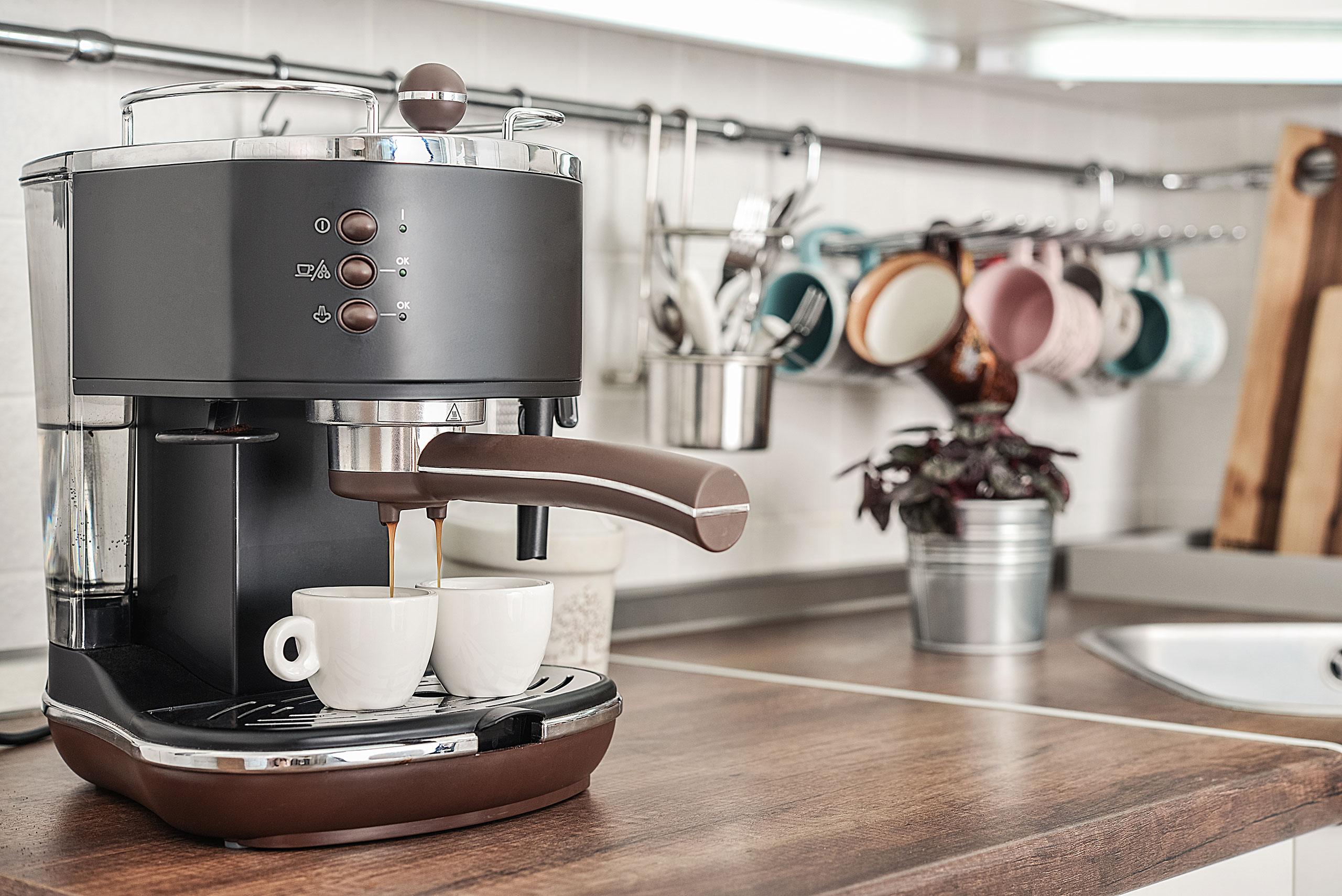
In a world of 10-step Korean skincare routines and the fast-growing minimalist skincare movement, the time that women spend on their skincare routine has never been more controversial. When most were told to either work from home or stay at home, there has never been a time where skincare was seen as more important than make-up.
This change in consumer behaviour has seen most people grow comfortable with their own skin and instead of using make-up to cover it up, use skincare products to improve their skin’s overall appearance.
Google trends data for targeted skincare products such as retinol and acid exfoliants has soared in the past year, seeing nearly 500% increases in searches as women take advantage of this time at home to embrace their skin and look for ways to wear less make-up when lockdown is over.
We know the residue left behind by hard water can cause irritation, clog pores and contribute to itchy dry skin, so we decided to ask over 2,000 of our female customers how long they spend on their skincare routine each day. To find out how your routine compares, read on.
We have called upon the skincare consultant expert at Rodial, Dario Damato, for advice on how you can reduce your time for skincare routines whilst also getting the most out of your time and the results you want. We also spoke to Pauline Guiraud at Nip+Fab and waxing specialist Michaela Morris of Terrace Therapies on how to treat maskne, breakouts and acne scars with a minimal skincare routine.
The Survey Results
We interviewed 2,000 women to discover how long they spend on their skincare routines daily.
Across all respondents, we found that the average person spends 12 minutes a day on their skincare routine
This breaks down into the following different age groups:
- Under 25s spend 17 minutes per day
- 25-34 year-olds spend 13 minutes per day
- 25-44 year-olds spend 11 minutes per day
- 45-54 year-olds spend 12 minutes per day
- 55-64 year-olds spend 12 minutes per day
- 65+ spend 11 minutes per day

Our findings suggest that most young people spend the most time on their skincare routines (under the age of 25) compared to other age groups. Likely due to the hormonal changes and environmental factors that can cause hormonal acne and breakouts.
The survey also found that 25-44 year olds and those aged over 65 were likely to spend the same amount of time on their skincare routines. This could be due to 25-44 year olds starting families and leading hectic lifestyles or careers which don’t leave enough time for daily skincare rituals. We also found that over 50% of respondents over the age of 65 said that they were a great deal more conscious of their carbon footprint compared to five years ago, which could add to their laissez-faire approach.
When you have so much on your plate, it can seem impossible or a waste of time to dedicate time to a morning and evening skincare routine. Hence why the results show that the average person in the UK spends less than 20 minutes a day on it.
That’s why we’ve spoken to the experts from Rodial, Nip+Fab and Terrace Therapies to discover how you can get the most out of your skincare routine, no matter how long you spend on it.
Time-saving skincare routine tips
Discover how to maximise the benefits and your results of your skincare routine in as little time as possible from the skincare experts at Rodial, Nip+Fab and Terrace Therapies.
Advice for eczema and rosacea
Before we delve into the skincare advice for different age groups, it’s important to give the advice on eczema and rosacea the attention it deserves.
Eczema (atopic eczema) is the most common type of eczema. It can make your skin feel dry, irritated and itchy. The condition can also cause your skin to become red and cracked. Those with atopic eczema might experience times when their symptoms flare up (such as the winter) or might experience it all year round.
Rosacea is a skin condition that can cause your skin to sting whilst becoming visibly red and flushed. Whilst rosacea mostly comes in cycles, some might experience permanent redness with visible small blood vessels on their face.
Dermatologists predict that we are seeing higher rates of skin conditions such as eczema, rosacea and acne after all of the national lockdowns, being stuck indoors in drier air and central heating, vitamin D deficiency, wearing masks and chronic stress.
These are our experts top tips for treating eczema and rosacea when you have no time for skincare:
Do not disrupt your skin’s barrier
Your priority should be to keep your skin moisturised and hydrated. Opt for products that contain hyaluronic acid or ceramides that can help your skin’s water retention.
Dependent on how much time you have, you can either layer a few light layers of skincare or choose a one-step rich emollient based moisturiser. Layering a few light layers of an eye cream, hydrating mist, serum, moisturiser and facial oil will keep your skin hydrated and moisturised throughout the day. If you do not have the time for that, prioritise a hydrating mist and emollient-based moisturiser. If you find that your skin gets dry and itchy throughout the day, keep a hydrating mist in your bag to spritz when you need.
Cleanse carefully
Do not fall into the trap of not washing your face in the morning or evening, thinking that this will help retain moisture in your skin – it won’t. By not cleansing in the morning and evening, this can cause your pores to become blocked with sebum and sweat which can result in breakouts.
Cleanse your skin in the morning and evenings before applying the rest of your skincare. Opt for a pH balanced gentle cleanser, specially formulated for sensitive or dehydrated skin. Avoid any cleansers which contain sodium lauryl sulphates (SLS) or other foaming ingredients. When cleansing, use warm water from the faucet and a soft flannel remove your cleanser and for a gentle exfoliation – omitting the need for an exfoliator. If you’re wearing makeup or sunscreen, double cleanse and go in with a micellar water beforehand or another round of cleanser.
If you or your family suffers from acute eczema or rosacea, it is worth considering the impact of your home’s water supply. Research conducted by University of Sheffield and King’s College London found that hard water can ultimately make eczema worse and can create an irritable skin barrier that can cause eczema on healthy skin. If you feel like you have tried everything and it hasn’t worked, it is worth researching into getting a water softener in your home. Softened water can also improve itchy, dry or sensitive skin.
Advice for teenage and young adult skin

It is common for teenagers to experience the peak of hormonal acne during this time. Between the hormones, first jobs, moving out of home and late nights, all these can contribute to your skin looking worse for wear too.
We spoke to Pauline Guiraud at Nip+Fab for their skincare advice for teenagers and young adults. Their top tip being:
Look for active ingredients in your skincare routine’s products
Teenagers and young adults experiencing acne or breakouts should avoid looking for products that are marketed specifically for these skin conditions. Instead, look into the products which contain a high percentage of active ingredients that can combat breakouts.
“If you have oily skin, look out for products which contain salicylic acid. Salicylic acid is great for teenagers and young adults with oily skin and those suffering with acne or acne scars as it provides a deep exfoliation,” advised Pauline Guiraud at Nip+Fab. “For a more gentle exfoliation and for normal or dry skin types, opt for products which contain mandelic acid and charcoal.”
“If you do not have the time to apply a face mask a couple times a week (which is completely normal), you are better off looking for a cleanser, toner or serum which contains active ingredients like mandelic acid or charcoal that you can commit to using twice daily. Two to three times a week, use products which contain salicylic acid to keep on top of breakouts and acne scars.”
So what does that look like in practice? “The key to healthy skin for 18-25 year olds is to have a routine that you know you can stick to, every morning and evening without fail (no matter how late you stay up!)” says Pauline Guiraud at Nip+Fab. “For hormonal acne, maskne and breakouts, use a targeted acid toner or pads which contain salicylic acid, mandelic acid or charcoal. Make sure you only use salicylic acid toners and pads two to three times a week as overuse can disrupt your moisture barrier.”
Always moisturise and wear SPF
Your skin’s sebum production is in it’s most active stage in your teenage and young adult years. In regular people’s terms, this means that your skin can be it’s most oily in your teen and early twenties. Whilst you might think that a way to combat this avoid moisturising, this can actually have a reverse effect on your skin.
If you deprive your skin of its much-needed moisture, your skin’s sebum production will go into overdrive and actually make your skin much oilier. Especially if your cleanser or toner contains active ingredients, you need to hydrate your skin after treating it to ensure that you do not disrupt your skin’s barrier. Hydrated skin also allows breakouts to heal quicker with less chance of acne scars when they leave your skin.
Apply a hyaluronic acid serum after cleansing and toning to keep skin hydrated morning and evening. In the morning after using your serum and/or moisturiser, always wear SPF. This is especially important when using acid toners or cleansers with active ingredients, as unprotected sun exposure can worsen hyperpigmentation and acne scars.
Advice for 25-55s

At this point in life, you are most likely in the midst of your career, taking care of your family or both. We spoke to Dario Damato at Rodial for advice for busy women on how to maximise the results of their skincare routine in less than 15 minutes.
Start using retinol products early
Retinol is a type of retinoid, also known as Vitamin A. The small molecules which make up retinol go deep beneath the outer layer of skin (the epidermis) to boost the production of collagen and elastin. This can reduce the appearance of fine lines and wrinkles. Retinol can also minimise enlarged pores whilst also improving skin’s texture and tone. I
Dario Damato at Rodial says “Incorporating a retinol-based product into your evening skincare routine takes as much time as applying a night cream. Apply a retinol product before your night cream a couple times a week (depending on your age and skin sensitivity) to smoothen skin texture.”
“Even if you are not on the market for anti-ageing products just yet. Prevention is the best cure,” says Dario. “Regular use of retinol and wearing SPF in the daytime in your mid-twenties is the best way to curb fine lines and wrinkles whilst keeping your skin radiant and youthful.”
Treat adult acne seriously
It is normal to expect that, if you have experienced acne as a teenager, that it will calm down by the time you are an adult. Whilst this is likely for some people, adult acne is incredibly common in a lot of 25-44 year olds and can be attributed to stress, hormonal changes, menopause and genetics.
We’re sure you have heard of maskne already, but due to the increased wearing of masks, there has been a rise in people experiencing breakouts around their chin, cheeks and noses. Skin and wax specialist Michaela Morris, who runs Terrace Therapies, says the best way to combat it is by “upping your water intake, washing your pillow case more regularly, cutting out dairy, double cleansing twice a day and moisturising, avoiding exfoliation in the breakout area, avoiding touching the face – and absolutely do not pick it!”
Advice for mature skin

No matter how long you spend on your skincare routine, it is likely to change once you mature and as you tailor it to your needs or lifestyle. The markers of aging such as sun spots, deep wrinkles and loss of volume usually appear mid-life onwards, which is why it’s important to review your skincare routine (including neck and decolletage) at this time.
We spoke to Dario Damato at Rodial for their advice for mature skin. For every woman over the age of 55 who wants to embrace their years and look the best they can, this section is for you.
The ‘Moisture Sandwich’ 3-Step Skincare Routine
Developed by skincare influencer Charlotte Parlermino, the simple yet effective technique has taken TikTok by storm, racking up thousands of views and likes on the platform. The term ‘moisture sandwich’ refers to the technique of layering up your skincare products with moisture on your skin to make it damp in between each product. This locks in hydration and protect your skin.
After washing your face, you should add a serum while it’s still dewy. This water helps the serum sink into the skin and it traps moisture. Then, dampen your skin again using a facial mist or tap water (only if you have softened water – more on that below), and then add a layer of your normal moisturiser. You can also use a balm or oil on top if you’ve got dry skin, but she advises skipping this step if you’re prone to acne. Once your skin has dried, don’t forget to add SPF – something Palermino encourages her followers to do on a daily basis. There are a couple of serums that shouldn’t be used on damp skin – namely retinol – but otherwise this routine can be used with your existing products.
Hydration is key
It is important to make sure that you don’t strip mature skin of its natural oils. “It is common for mature women to experience dryer, more sensitive skin,” says Dario Damato. “That’s why it’s best to look for cleansers and moisturisers which include skin-protective and moisturising ingredients like ceramides or hyaluronic acid.”
Read: If you are short on time, prioritise a cleanser and moisturiser which contains ceramides or hyaluronic acid. Always follow up with SPF in the morning. “Starting in your 40s, the hyaluronic acid naturally found in your skin starts to deplete,” says Dario Damato. “This is what makes deep wrinkles and fine lines more pronounced. When applied to the skin through your skincare products, hyaluronic acid holds 1,000 times its weight in water and can replenish and retain cell moisture.”
On days when you have a bit more time, a facial massage can be transformative for mature skin. Think of it like a first approach if you are considering botox or fillers (if you want, we’re not saying you need it). “Apply a generous amount of quality facial oil or moisturiser to your hands and gently but firmly massage your jawline, cheekbones and orbital bone in sweeping, upwards strokes,” says Dario Damato. “Regular facial massage can sculpt the facial muscles to appear more defined and reduce fluid build-up to reduce puffiness. It also boosts collagen production whilst improving blood flow, tissue toning and cell turnover for glowing skin.”
Don’t be afraid to exfoliate
Don’t be afraid to exfoliate, but exfoliate minimally and carefully. “Physical scrubs (like those with apricot kernels) used to be all the rage, but they can also cause micro tears on the epidermis with regular use,” advises Dario Damato. “Exfoliation is necessary, but don’t overdo it. When your skin matures, you have to remember that the outer layer becomes thinner and more delicate.”
“To buff away dead skin cells safely, it is recommended for mature skin to use acid exfoliants containing AHAs for smooth, even-toned skin which is glowing enough to deflect from any sagging,” says Dario Damato.
Dario Damato recommends looking into skincare products which contain bee venom to reduce the appearance of fine lines and deep set wrinkles. “You might’ve seen the (Un)well documentary on Netflix which discusses the pros and cons of bee venom for holistic use. In skincare, bee venom mimics the effects of botox by controlling muscle contractions to reduce expression lines,” advises Dario Damato. “Look for a cleanser, serum, eye cream and moisturiser which contain high concentrations of bee venom for a skincare routine which is ideal for mature skin and targets the signs of ageing.”
How long does it take for a skincare routine to work?
Show-stopping change doesn’t happen overnight, and this is true when it comes to skincare. However, by following a skincare routine in the morning and evening, it is possible to achieve your skincare goals no matter how short your routine or age.
To find out how long you have to follow your skincare routine to see results, the experts told us that improvements to your skin could take at least a month. However, you should follow a new routine for a minimum of three months to assess its effectiveness.
It can take approximately 30 days for the top layer of skin or epidermis to turnover once. By following your skincare routine for at least three months, this means your epidermis can have three turnover cycles, allowing enough time to see improvements to your skin.
Allowing yourself a minimum of 12 weeks of following a skincare routine is especially important when targeting wrinkles or pigmentation. When it comes to treating fine lines and hyperpigmentation, it’s all about patience. Remember that it is a marathon, not a sprint. Give your products and skincare routine a minimum of three months to assess.
If you’re at your wits end with eczema, rosacea or dry skin and believe you have tried everything, it might be time to reflect on if the issue is coming straight from your tap. Soft and calm skin is one of the many benefits of softened water. Unfortunately, many of us live in areas with hardened water which can worsen dry skin, eczema or rosacea.
Softened water is kinder to dry, sensitive skin and can taste better – click to book a demo today!


